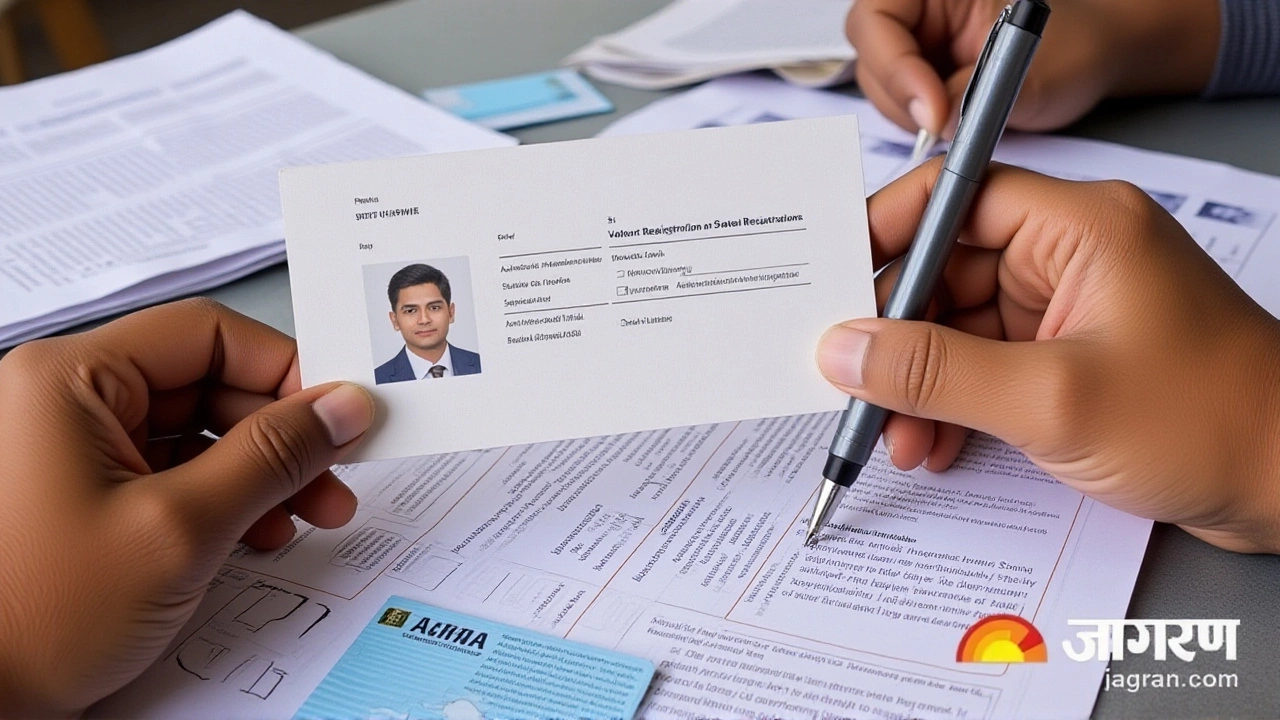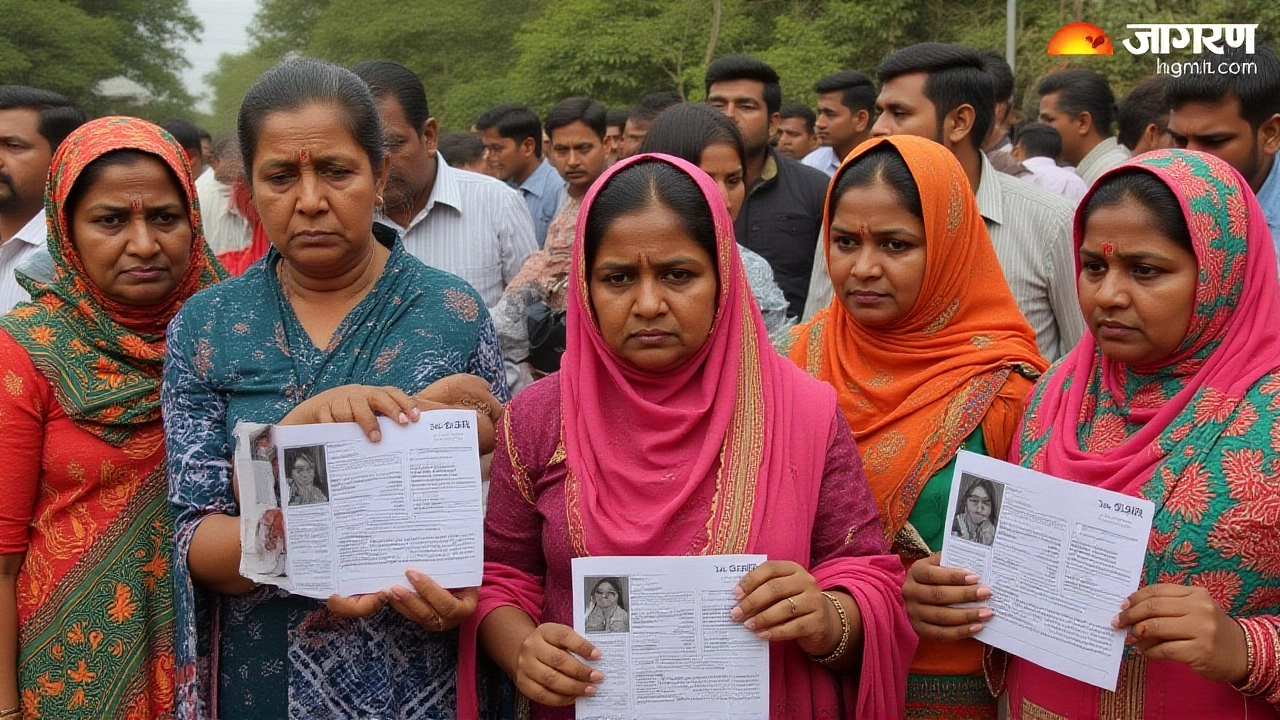UP Voter List Purge: Name Removed If SIR Form Not Submitted by Dec 4
 Nov, 23 2025
Nov, 23 2025
By December 4, 2025, every eligible voter in Uttar Pradesh must submit their Special Summary Revision (SIR) form—or risk being erased from the state’s voter rolls. The deadline, set by Chief Election Officer Navdeep Rina, is part of a sweeping cleanup targeting an estimated 50 million duplicate or invalid entries. If unsubmitted, names will be purged from the final voter list published on December 9, 2025, just weeks before state assembly elections. The move, while framed as a transparency drive, has ignited fierce political backlash.
Why This Purge Is Happening
Over 21.8 million SIR forms have been digitized so far across Uttar Pradesh, but the real problem lies in the duplicates. Senior election officials, speaking anonymously, say nearly half of all questionable entries come from just a few districts. In Agra alone, 384,000 duplicate voters were identified—out of a total 1 million in the entire Agra division. The state election commission has mapped block-by-block duplicates and handed the lists to district magistrates, demanding immediate verification at the gram panchayat level. The goal? One person, one vote—no exceptions.
That’s the official line. But the scale is staggering. With 46 million forms to collect in just 16 days, that’s 3 million forms per day. Field officers—known as Booth Level Officers (BLOs)—are walking door-to-door in over 70,000 villages. Many are overwhelmed. Some districts, like Chitrakoot and Saharanpur, have digitized 20–30% of their forms. Others lag badly. And here’s the twist: if your mobile number isn’t linked to your voter ID, you can’t submit online. No workaround. No exceptions. If the BLO doesn’t come to your door, you’re out of luck.
Political Firestorm
Akhilesh Yadav, president of the Samajwadi Party, didn’t mince words. “This isn’t a cleanup—it’s a targeted purge,” he said. “BLOs aren’t visiting Muslim, Dalit, and OBC neighborhoods. They’re skipping the very areas where our vote bank is strongest.” He claims up to 50,000 voters from these communities could be erased, effectively silencing millions ahead of the 2027 assembly polls.
The BJP and Election Commission deny this. They say the SIR process is blind to caste or party. But the data tells a different story. In districts where the Samajwadi Party holds sway, digital submission rates are lowest. In BJP-dominated areas, compliance is higher. Coincidence? Maybe. But when 3.84 lakh duplicates are found in Agra—where BJP has a strong base—and far fewer in, say, Azamgarh, questions arise.

How the System Works—and Fails
The SIR process is simple in theory: verify every voter’s identity, remove deceased or relocated names, and eliminate duplicates. In practice? It’s messy. Many elderly voters don’t have mobile numbers. Many rural families share one phone. Some BLOs are understaffed; others are accused of favoritism. The Chief Election Officer Navdeep Rina has ordered all pending cases in the ‘Book a Call with BLO’ app to be resolved within 48 hours. That’s ambitious. But how many BLOs even have reliable internet?
There’s also a chilling detail: if you don’t submit your form by Dec 4, you can’t appeal until Dec 23, when the final list is published. And appeals only last until Dec 30. That’s a seven-day window to fix a system that’s failed you for months. It’s like being told to fix your car after the highway closes.
What’s Next? The Timeline
- Dec 4, 2025: Deadline to submit SIR form
- Dec 9, 2025: Names removed from draft list
- Dec 10, 2025: Computerized voter list finalized
- Dec 22, 2025: Polling station numbering and ward mapping complete
- Dec 23, 2025: Final voter list published
- Dec 23–30, 2025: Claims and objections accepted
- Jan 1, 2026: New 18-year-old voters can apply
The Election Commission says this is the most rigorous voter audit in India’s history. But critics say it’s rushed, opaque, and politically timed. One senior bureaucrat told me: “We’re not removing fraud. We’re removing uncertainty.”

What You Should Do Now
If you’re in Uttar Pradesh:
- Check if your name is on the draft list at electoralsearch.in
- Confirm your mobile number is linked to your voter ID—otherwise, you can’t go online
- If no BLO came to your door, visit your local election office immediately
- Keep a printed copy of your SIR form submission
- Don’t wait. The clock is ticking.
For many, this isn’t about politics. It’s about being counted. Being seen. Being heard. If you’re erased from the list, you’re erased from democracy.
Frequently Asked Questions
What happens if I miss the Dec 4 deadline for the SIR form?
Your name will be flagged for removal from the draft voter list on December 9, 2025. You can still file an objection between December 23 and 30, but only if your name appears on the final published list. Missing the deadline means you must prove your eligibility under pressure—with limited time and resources. Many rural voters won’t make it.
Can I submit the SIR form online if I don’t have a linked mobile number?
No. The online portal requires your mobile number to be pre-linked to your voter ID. Without it, the system blocks login. If you’re in a village without reliable connectivity or a registered phone, your only option is to wait for a BLO visit—which may not happen. This creates a digital divide that disproportionately affects low-income and rural voters.
How many duplicate voters are estimated in Uttar Pradesh?
State election officials estimate around 50 million duplicate or invalid entries across Uttar Pradesh. Agra district alone accounts for 3.84 million duplicates, while districts like Meerut and Varanasi show over 1.5 million each. These numbers suggest systemic fraud, but also point to poor record-keeping—especially in densely populated, low-literacy areas.
Why are opposition parties accusing the Election Commission of bias?
Opposition parties claim BLOs are avoiding Muslim, Dalit, and OBC-dominated areas where their support is strongest. Data shows lower form submission rates in these regions, even though population density is higher. While the Commission denies targeting, the timing—just before elections—and uneven enforcement fuel suspicion. The lack of independent audits makes verification impossible.
What’s the impact on new voters turning 18?
New voters who turn 18 on or before January 1, 2026, can still apply—but only after the final list is published. This means they’ll be excluded from the 2027 elections unless they act quickly after Jan 1. Many won’t know they’re eligible until it’s too late. The process lacks outreach, especially in schools and colleges, leaving thousands unaware.
Is this voter purge legal under Indian law?
Yes. The Election Commission has broad authority under the Representation of the People Act to clean voter rolls. But legality doesn’t mean fairness. The Supreme Court has previously ruled that voter purges must be transparent, non-discriminatory, and offer adequate recourse. With only seven days to appeal after a 16-day blitz, many argue this process violates the spirit of those rulings.